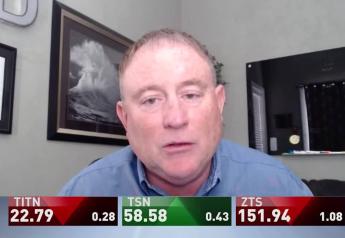One Farmer’s Experience with Pay-for-Performance Conservation in the Lake Erie Watershed

This article was written by Jon Winsten, PhD, senior agricultural economist for Winrock International.
If you had to spend $14,000 to make changes on your farm that resulted in a guaranteed payment of $22,000 within the year, would you do it? As a participant in a pilot pay-for-performance (PFP) conservation program, Ohio farmer Frank Hill did just that.
By paying farmers per pound of nutrient loss reduction, PFP conservation motivates farmers to find the most cost-effective ways to reduce nutrient losses for their specific fields. Winrock International and its partners have been pilot-testing this concept in various parts of the U.S., including in the Old Woman Creek watershed that drains directly into Lake Erie in northern Ohio.
Hill has been farming the Old Woman Creek watershed since he was a boy. His father was employed as an engineer but owned some farmland and rented most of it out. Frank, now 64, started out with a small hog operation in high school and grew that over the years to 2,500 hogs, plus chickens and he cropped land to feed them. Since 2008, when he got out of hog farming, Frank has been focused on cropping, mostly corn and beans, on 1,300 acres, including the land he grew up on. He owns 900 acres and rents an additional 400; it’s mostly sandy loam soils and just a few miles south of the shores of Lake Erie.
During 2018 and 2019, Hill participated in the Winrock pilot project which was implemented in partnership with the Erie County Soil and Water Conservation District (SWCD) and Heidelberg University and funded through EPA’s Great Lakes Restoration Initiative. Breann Hohman of the Erie SWCD recruited Frank to participate in the project, which offered farmers $35 per pound of phosphorus (P) loss reduction and $5 per pound of nitrogen (N). Homan worked with Hill to assess what changes on which of his fields would be the most cost-effective using the Nutrient Tracking Tool (NTT) program and a best management practices Cost Analysis Tool created by the project.
Before participating in the PFP pilot project, Hill had only limited involvement with conservation, having tried a little bit of no-till a long time ago. However, using the numbers that Hohman produced for his farm, it became clear that there were several changes that could be cost-effective ways to reduce nutrient loss on many of his fields. These included cover cropping, as well as changes in tillage timing and intensity. Hill chose the changes on fields for which cost-to-payment ratio would be the lowest to maximize his profits.
Hill decided to start by flying on winter rye in August on almost 500 acres of corn and beans. He also shifted some fall tillage to spring and a few fields shifted from chisel plow to vertical tillage. These changes resulted in an estimated annual reduction of almost 70 lbs. of P loss and almost 4,000 lbs. of N loss. Hill’s cost to make these changes was almost $14,000, but the performance-based payment was over $22,000. Capturing this additional $8,000 in profit is the proverbial “carrot” that motivated Hill to use the field-specific information to decide on which changes to make in each field. The approach of paying for an environmental outcome made more sense to Hill as a farmer and as a businessman.
“My crops looked better and my yields were up on the fields that had cover crop on them,” Hill says. In 2020, although the PFP program had ended, Hill put cover crops on over 1,000 acres and he no-tilled crops into the spray-killed cover on 900 of those acres.
Farmers like Frank Hill, who are open to conservation and use information and incentives to make smart business decisions, are the ones who will make more money and help achieve important water quality goals as farming moves toward a pay-for-performance approach to conservation. “I learned a lot in this project,” Hill says. “I am glad that I did it and I am going to continue the cover cropping because it is good for the land and good for the lake.”
To learn more about Winrock’s work on pay-for-performance conservation, visit https://www.winrock.org/innovative-pay-for-performance-program-rewards-farmers-for-improving-water-quality/







